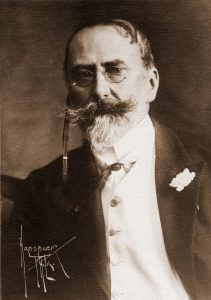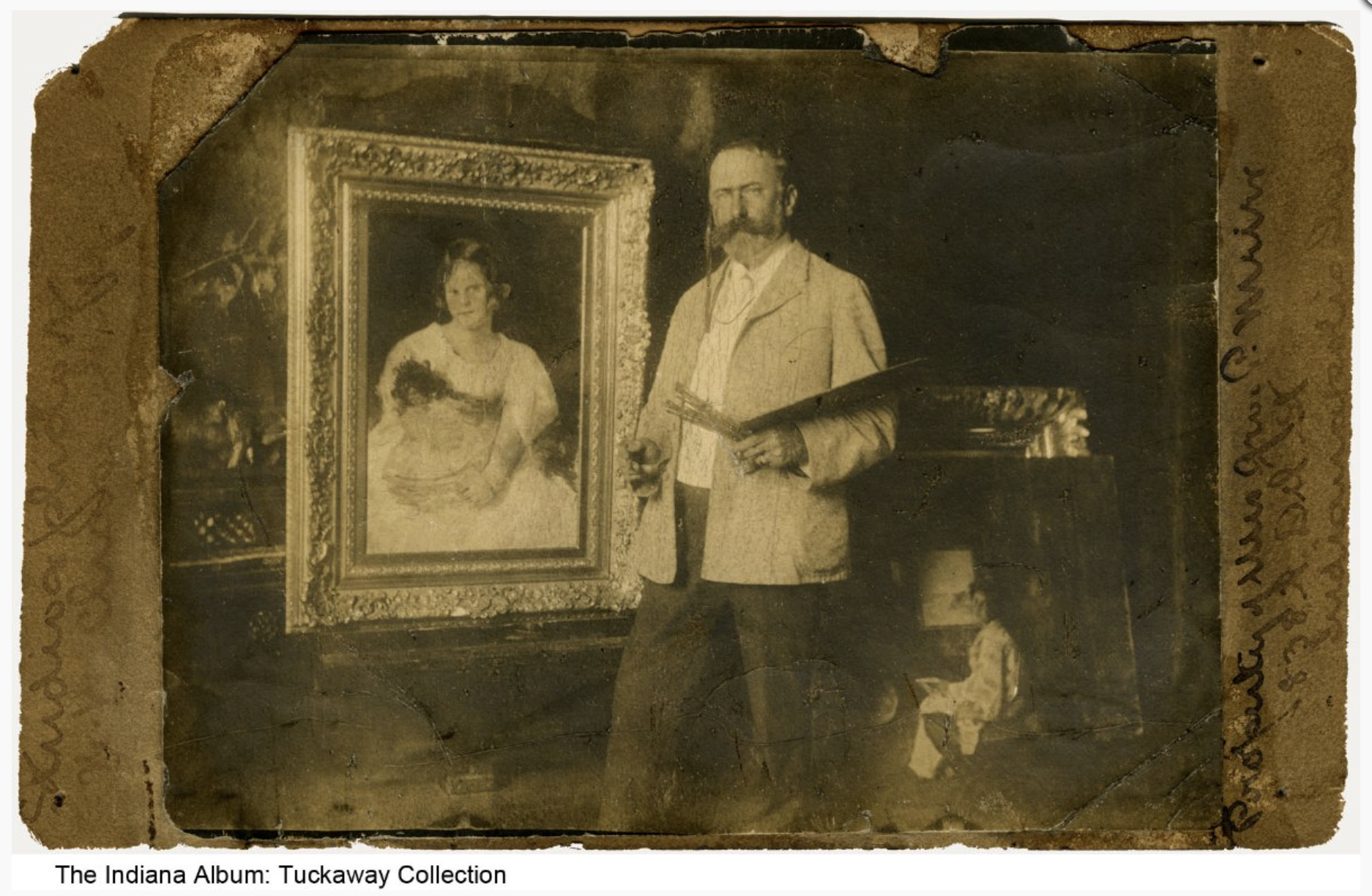
Photo info …
Credit: Public domain via Wikimedia CommonsView Source
(Nov. 1, 1849-Oct. 25, 1916). Born in Williamsburg (later renamed Nineveh), Indiana, Chase was the oldest of six children. He moved to Indianapolis in 1861 where his father opened a shoe store located near the studio of Indianapolis artist . Chase became a student of Hays and by the late 1860s was painting and selling portraits.

Through Hays, Chase developed a friendship with , whom he called his “father in art.” When Hays felt that Chase had learned all he could under his direction, he and Cox suggested to David Chase that he allow his son to study at the National Academy of New York. His father reluctantly agreed, and Chase left for New York at the age of 21. The following summer he returned to Indianapolis and worked in Hays’ studio on the Circle (see ).
A business failure prompted the family’s move to St. Louis, where, in 1871, Chase won awards at the 11th St. Louis Fair. Recognizing the young artist’s talent, a group of seven St. Louis businessmen sponsored his study at the Royal Academy in Munich in return for one painting each and help in acquiring European paintings.
From 1872 to 1878, Chase studied in Munich. He returned to New York to be an instructor at the Art Students League, a position he held for nearly four decades. In 1879, along with artists such as Thomas Moran, George Inness, and J. Alden Weir, Chase started the American Academy of Fine Arts and served as its president for nearly 10 years. The group represented young artists rebelling against the National Academy’s apparent lack of acceptance of their works. The academy was a leading force for other groups established for the advancement of American art.

Chase married in 1886 and a few years later acquired a summer home in Shinnecock, Long Island (near Southampton), where, in 1891, he established the Shinnecock Hills Summer School of Art. In addition to teaching at the Art Students League and at Shinnecock, he accepted private students at his studio. From 1903 to 1913 he conducted classes in Europe. He also founded the Chase School of Art in 1896, which became the New York School of Art two years later. Many outstanding American artists studied under Chase, including George Bellows, Rockwell Kent, Edward Hopper, Joseph Stella, and Georgia O’Keeffe.
Chase joined the Ten American Painters group in 1905 and is recognized today as an outstanding American Impressionist. Although his time in the Midwest was limited to visits after 1878, his works are well-known and represented in many Indiana collections.

Help improve this entry
Contribute information, offer corrections, suggest images.
You can also recommend new entries related to this topic.

